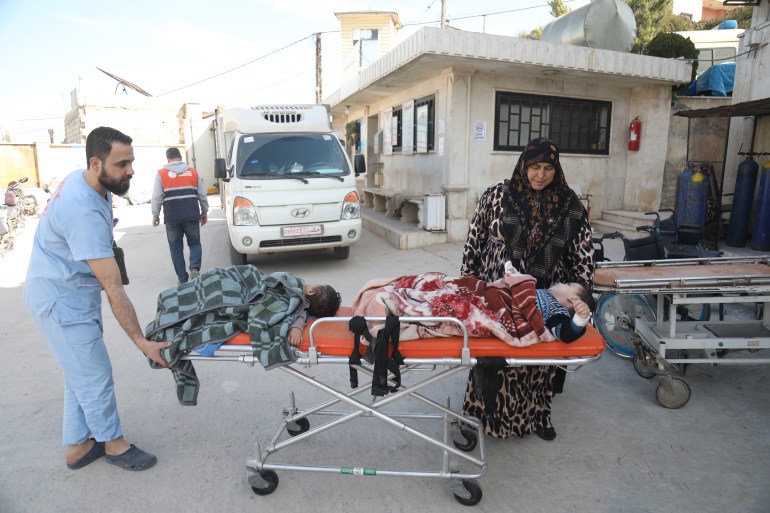‘Crush syndrome’ is debilitating Syria’s earthquake victims
With hundreds of cases, doctors say medical facilities in NW Syria are lacking and unable to deal with the complications of crush injuries.
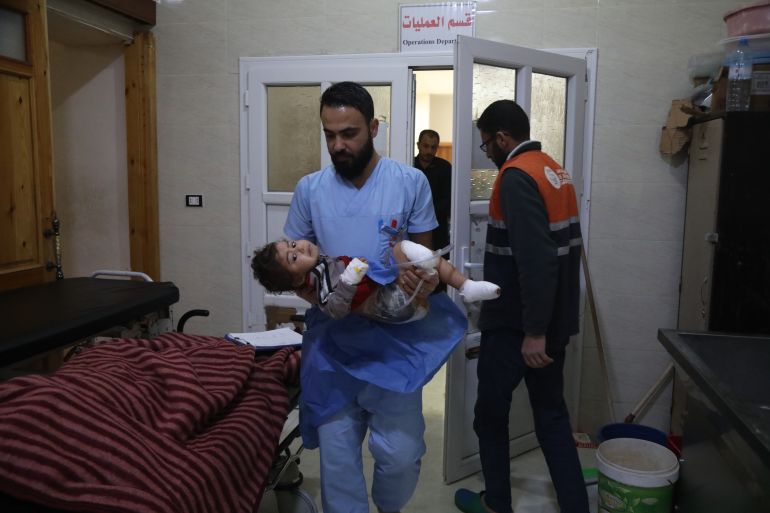
Idlib, Syria – When two-year-old Nour Abdelqader was pulled out from under the rubble in the rebel-held town of Jandaris after last month’s deadly earthquakes, rescue teams thought she was dead.
Nour’s brother and mother did not survive the tremors, yet the young toddler’s heart was still beating when she arrived at a hospital in Afrin, northwest Syria.
Keep reading
list of 3 itemsTurkey’s Syrian refugee youth worry about their post-quake future
Syrians displaced by quakes fear cholera outbreak as cases surge
But like many survivors of the magnitude 7.8 quake that killed more than 50,000 people across Turkey and Syria on February 6, Nour is suffering from what doctors call crush syndrome, after her limbs were squashed under the heavy weight of the rubble for a prolonged period.
The little girl lost her right leg because complications from the crush injuries were severe enough to kill her otherwise, and doctors are now trying to provide the necessary treatment and support to help her re-learn how to walk.
“Both of Nour’s legs were severely damaged during the quake. We had to amputate one leg because the crush injuries were too extensive – the limb was dead and infected,” said Abdelsalam al-Naasan, an orthopaedic surgeon at Akrabat Hospital, a facility located along the Syria-Turkey border in the rebel-held town of Idlib, and funded by the Union of Medical Care and Relief Organizations (UOSSM).
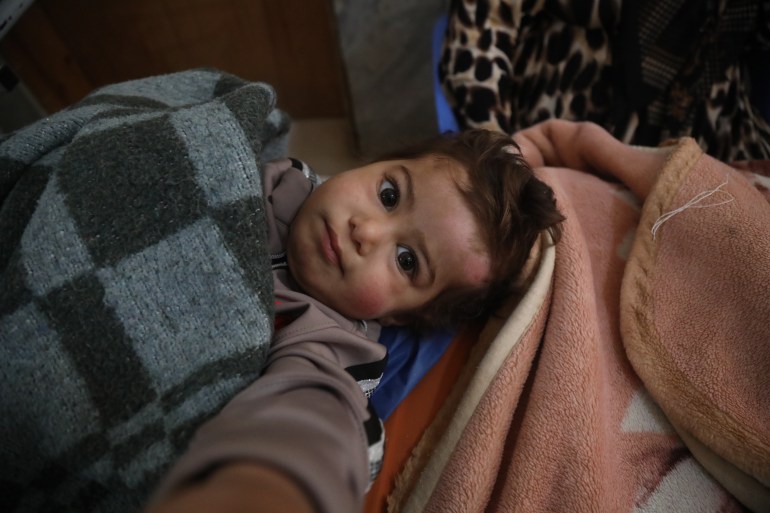
Nour will need a prosthetic right leg and still needs complex surgeries and specialist procedures to regain functionality in her left leg, explained al-Naasan, adding that optimal care was not available in northwest Syria.
“What we can offer here [in Syria] might leave her with long-term disabilities or deformities,” he added.
Although Nour’s aunt, Fransa al-Manadi, understands that her niece’s recovery will be long and arduous, she hopes to see her walk again.
“I’m so glad that she’s still alive, even if with one leg,” she said. “I know her treatment will be difficult, but I hope she’ll live as normal a life as possible.”
According to healthcare officials in northwest Syria, hundreds of the 12,000 people injured in the quakes have been diagnosed with crush syndrome, although the exact number is unknown.
Nearly 6,000 people were killed in northwest Syria during the quakes and their aftermath.
Others were luckier
While Nour’s condition is complicated, Barakat Maajoum, 65, who also suffered from crush syndrome during the earthquakes, had better luck.
“When our building collapsed during the quakes, the weight of the rubble damaged the vessels in my arm and crushed my muscles,” said the father of three from Jandaris.
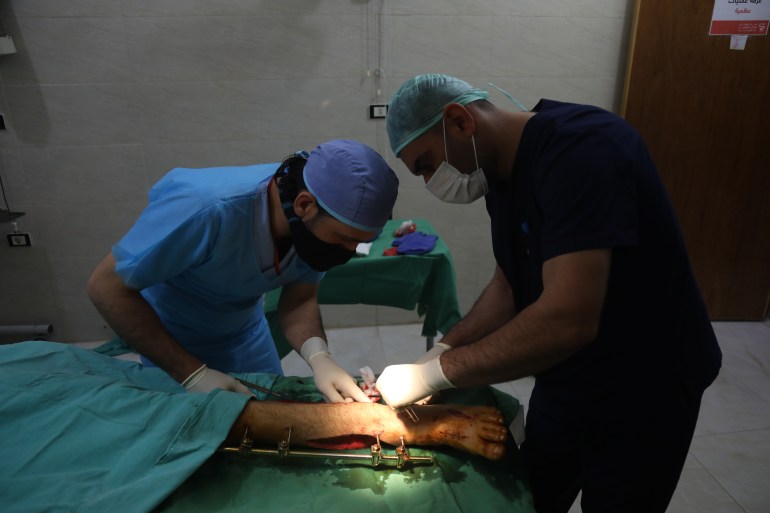
“But I was taken to a hospital in Bab al-Hawa and operated on right away. I was the only one injured from among my family and I’m very lucky that I still have my arm,” he added.
According to al-Naasan, the first six to nine hours after a crush injury are critical to saving the affected limbs.
“After 24 or 36 hours, the chances of saving a limb becomes less likely,” he said, adding that a fasciotomy – cutting open the inflexible fascia constraining the muscles to allow swelling to expand – is sometimes needed to revive blood flow that the muscles need to survive.
Maajoum will be staying in the hospital in Akrabat for a while longer, but doctors expect him to make a full recovery and eventually return to work as an imam in his local mosque.
Many cases, few resources
Crush syndrome occurs when limbs are starved of blood circulation for long periods of time, causing muscle fibres to die and toxins to be released into the bloodstream. The syndrome can result in limb amputations, kidney failure, multisystem organ injury and other fatal complications.
At least 100 of the quake survivors who suffered crush syndrome have been diagnosed with kidney failure, said officials.
“Crush syndrome is particularly dangerous because myoglobin and potassium [toxic materials] released into the bloodstream can cause kidney injury and failure,” said al-Naasan, explaining that at least 300 people have been diagnosed with crush syndrome at Akrabat Hospital alone.
In addition to needing kidney dialysis, many patients with crush syndrome need specialist care and complex procedures to treat the injuries to damaged organs, and rehabilitation to help them regain the use and functionality of their limbs. “Many might have full or partial disability depending on the level of damage to their limbs,” said al-Naasan.
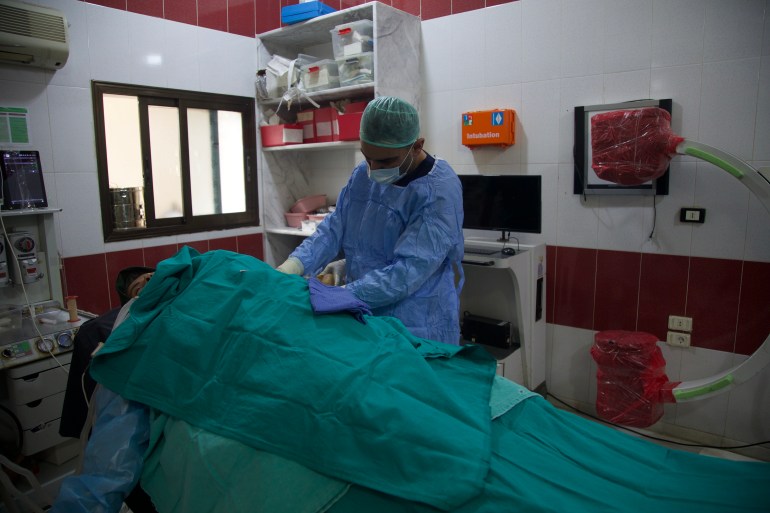
Specialist care
Although healthcare professionals have been working around the clock to treat victims of the quakes, a lack of resources at facilities in northwest Syria means many patients cannot get the care they need.
According to Zuhair al-Qarrat, a general surgeon in Idlib, one of the main challenges facing hospitals in northwest Syria since the quakes is the lack of medical equipment to deal with the complex conditions.
“There is a high mortality rate among patients diagnosed with crush syndrome. Many of them need specialist treatment and dialysis to treat the kidney failure, but we don’t have enough machines or medical resources for all the patients suffering from the condition,” he said.
“The healthcare system in northwest Syria has been lacking resources, medicines, and equipment for the past 10 years. The aid that came through after the quakes only covers 25 percent of our needs,” added al-Qarrat.
Al-Naasan explained that patients with crush syndrome will not only need physical therapy but also mental health support to help them overcome the trauma of their experiences.
“There’s a lot of need and not enough to go around,” said al-Naasan. “But we are doing all we can to help.”
Ali Haj Suleiman reported from Idlib, Syria. Arwa Ibrahim reported from London, UK.
